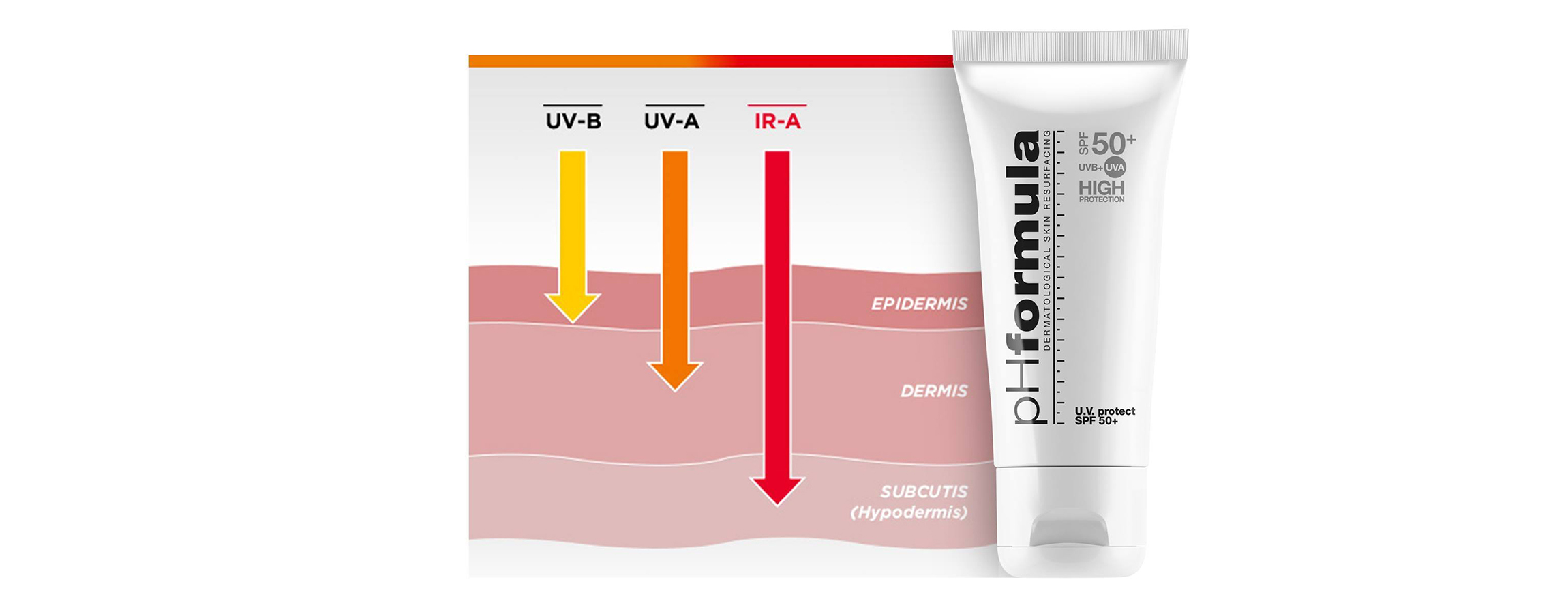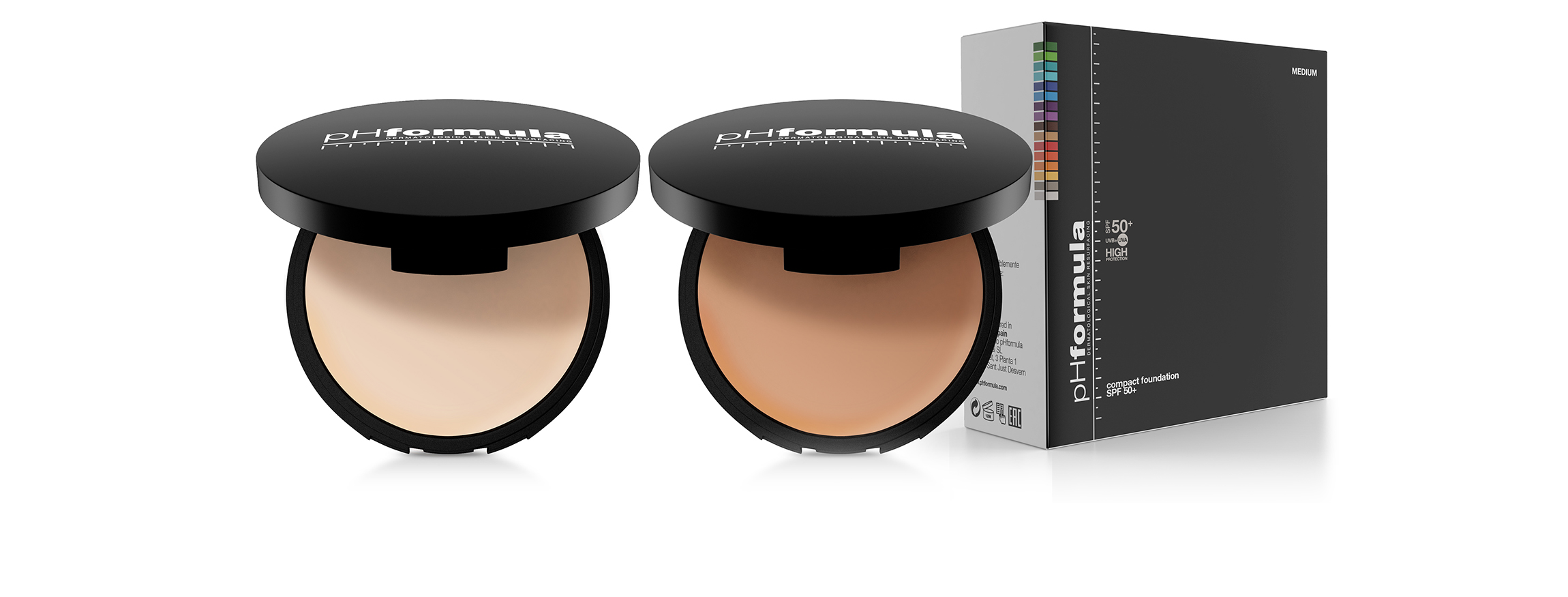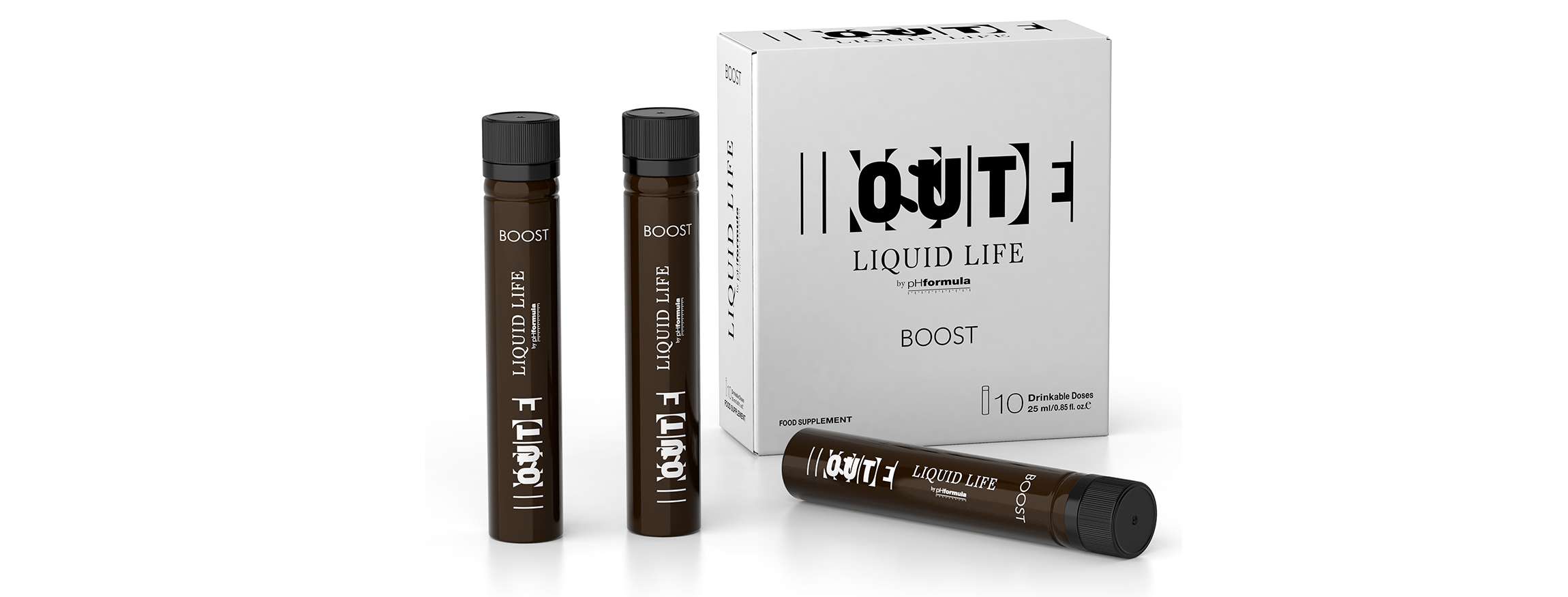What is Solar Radiation - and how does it affect your skin?
Sunlight, an essential pre-requisite for life, may be extremely dangerous to human health. Excessive exposure to the sun is known to be associated with increased risks of various skin cancers, cataracts, and other eye diseases, as well as accelerated skin ageing.
What is Solar Radiation?
Solar radiation is the energy emitted from the sun in the form of electromagnetic waves, which includes visible and ultraviolet light and infrared radiation. Beaming energy is emitted by the sun from a nuclear fusion reaction that creates electromagnetic energy. Approximately half of the radiation is in the visible short-wave part of the electromagnetic spectrum; while the other half is mostly in the near-infrared part, with some in the ultraviolet part of the spectrum.
.jpg) Types of radiation
UVA (ultraviolet A) & UVB (ultraviolet B)
The sun emits two types of ultraviolet (UV) radiation that reach our skin: ultraviolet A (UVA) and ultraviolet B (UVB). Both types damage unprotected skin, but how differs. Knowing how UVA and UVB rays and their ultraviolet light differs is essential in order to understand the need for broad-spectrum sun protection.
UVA light and UVB light are not within the spectrum of visible light that the human eye can see. All light rays, including UVA and UVB rays, have different wavelengths, measured in nanometers. To give you some perspective, a nanometer is one billionth of a meter. Some of those rays, like blue light, are visible to us, some aren’t.
IR (infrared)
Sunlight damages human skin, which results in the appearance of wrinkles on the skin. Since natural sunlight is polychromatic, its effects on the human skin are the result of the interactions among the many wavelengths, including UV, visible light, and infrared (IR). In direct sunlight, the temperature of human skin rises to about 40°C following the conversion of absorbed IR into heat. Research demonstrates that IR and heat exposure each induces inflammation, disrupts and alters dermal structural proteins, thereby adding to premature skin ageing.
 What does solar radiation do to your skin
The skin uses sunlight to help manufacture vitamin D, which is important for normal bone formation. But sometimes it's ultraviolet light can be very detrimental.
Within the skin's outer layer are cells that contain the pigment melanin. Melanin protects the skin from the sun's ultraviolet rays, which can burn the skin, and over time, could reduce its elasticity and causes premature ageing. Sun tanning occurs as a result of exposure to sunlight. The skin then produces more melanin and darkens. The tan fades as these cells move toward the surface and are sloughed off.
Too much exposure to ultraviolet or UV rays can cause sunburn as UV rays penetrate the outer skin layers and pass into the deeper layers, where they can damage or kill skin cells. People who do not have much melanin should protect themselves by covering up sensitive areas, wearing sunblock and limiting their total exposure time.
Frequent and prolonged exposure to ultraviolet rays over many years is the chief cause of skin cancer, and for this reason, it is important to examine skin regularly for the development of suspicious growths or changes that make occur in the skin. Early detection and treatment are key to increasing the cure rate for skin cancer.
How does solar radiation cause skin cancer, photo-ageing, and damage to the skin?
Skin is composed of three layers: the epidermis, or outermost layer; the dermis, or middle layer; and the basement layer. The dermis contains collagen, elastin, and other fibres that support the skin's structure. It is these elements that give skin its smooth and youthful appearance and that are damaged by UV radiation (UVR).
The UVR that affects the skin is composed of two different types of waves, UVA and UVB. When UVR hits the skin, cells in the dermis scramble to produce melanin to the epidermis. This is the process that gives you a tan, which is really just your skin attempting to block the radiation from penetrating your skin.
Most skin cancers are a direct result of exposure to the UV rays in sunlight. Both, basal cell and squamous cell cancers (the most common types of skin cancer), tend to be found on sun-exposed parts of the body and is typically related to lifetime sun exposure. The risk of melanoma, a more serious but less common type of skin cancer, is also related to sun exposure, although perhaps not as strongly. Skin cancer has also been linked to exposure to some artificial sources of UV rays.
UVB rays are shorter than UVA rays, and are the main cause of sunburn. But it is the UVA rays with their longer wavelength, that is responsible for much of the damage we associate with photo-ageing. UVA rays penetrate deep into the dermis, where they damage the collagen fibres. This damage causes increased production of abnormal elastin. The unusual amounts of elastin result in the production of enzymes called metalloproteinases. These enzymes, which rebuild damaged collagen, often malfunction and degrade the collagen, resulting in a compromised skin barrier. As this process is repeated with daily UVA exposure, the skin forms wrinkles and the depleted collagen results in leathery skin.
.jpg) The best way to combat photoaging is through prevention
Applying a UV protection daily will assist photo-ageing and reverse visible signs of ageing. Here’s how with pHformula’s Homecare and Professional Treatments.
C.C. Cream SPF30+
The multifunctional complexion correcting C.C. cream instantly minimizes the look of imperfections while the sun filters block ageing-accelerating UVA-UVB rays. Available in light, medium, dark and dark plus.
PROPERTIES OF KEY ACTIVES
UVA and UVB filters - for daily broad spectrum-protection.
VITAMIN C - Effective in treating photo-aged skin with advanced rejuvenation properties adding powerful photoprotection to the skin.
 U.V Protect SPF50+
A unique combination of state-of-the-art ingredients. The U.V. protect SPF 50 + provides superior protection against harmful UVA/UVB rays whilst reducing inflammation produced by infrared radiation. Provides high sun protection, yet is comfortable and gentle on the skin. This unique formula, especially for the face, includes beneficial ingredients to help prevent skin dryness. Ideal to be applied during skin resurfacing procedures or outdoor activities and sports.
PROPERTIES OF KEY ACTIVES
UVA and UVB filters - for daily broad-spectrum protection.
Enzymatic photo-protector - An active ingredient that prevents the visible signs of photo-ageing like spots, wrinkles, and dryness. It helps to reinforce the cutaneous barrier, improves skin moisture and corneocyte cohesion, protects cells from UV damages whilst reducing inflammation produced by Infrared radiation.
Co-Enzyme Q10 - Reduces free radical damage via its antioxidant properties. It also assists cells in building collagen and therefore reducing the appearance of fine lines and wrinkles.
Vitamin C - It is one of the best sources to neutralize free radical and combat photo-ageing. Promotes skin repairing and stimulates cellular restoration.
Vitamin E - Protects the skin from environmental pollution and has a protecting action against UV radiation. It is an excellent moisturizer with powerful anti-inflammatory and wound healing properties.
The use of the pHformula U.V. protect SPF 30+ or SPF 50+ is essential to protect the skin from UV radiation. Please note that it is recommended that extended sun exposure must be avoided, especially in the 10 days prior to the treatment.
.jpg) Compact Foundation SPF 50+
This long-wearing formula provides a broad-spectrum UVA-UVB protection, easy to blend without feeling heavy or greasy - powerful protection and natural coverage.
UVA and UVB filters - Essential for daily broad-spectrum protection.
Carthamus tinctorius seed oil, known as a rich source of natural Omega-6 with superior anti-oxidant, brightening, anti-microbial and healing properties. It helps defend the skin against free radical damage caused by environmental aggressors (such as UV rays).
Vitamin E - Protects the skin from environmental pollution and has a protecting action against UV radiation. It is an excellent moisturizer with powerful anti-inflammatory and wound healing properties.
In your consultation with your skincare therapist, remember to disclose that you’ve been, or are going for a Red Light Therapy session so that your pHformula prescription complements the treatment in order to reap the full benefits of a healthy looking skin, no matter what your skin concern.
 SOS rescue oil
This dual-phase SOS rescue oil is a unique combination of oil blends and naturally sourced actives, infusing the skin with a healthy glow and youthfulness. Collagen production improves, helping soften the look of fine lines and wrinkles while visibly firming skin. It provides natural barrier protection for the skin.
PROPERTIES OF KEY ACTIVES
Argan Oil - Rich in unsaturated fatty acids which helps in the restoration of the hydro-lipidic film of the skin. The high level of Vitamin E and Ferulic acid act as a powerful antioxidants that helps prevent damage caused by sun exposure. Also contains linoleic acid, which is one of the omega-6 fatty acids that assist to preserve skin cell integrity.
Vitamin C- Prevents and repairs skin damage caused by free radicals and restores its glow, freshness, and vitality while protecting from future damage.
Vitamin E- Protects the skin from environmental pollution and has a protecting action against UV radiation. It is an excellent moisturizer with powerful anti-inflammatory and wound healing properties.
.jpg) Liquid Life Boost
The Liquid life skin supplement is formulated to transform your skin from the inside out. This skin boost formulation contains essential micronutrients which are that is essential to maintain a healthy skin from the inside out. The unique combination of collagen peptides, vitamins, minerals and hyaluronic acid work synergistically to promote skin suppleness and firmness, boost the immune system, intensively hydrate the skin, protect against oxidative stress and increase radiance. Since it is in liquid form, liquid life boost is able to deliver higher concentration of collagen peptides and other nutrients faster and more effectively into the bloodstream. It can boost your body’s natural collagen production and replenish the collagen you lose during the ageing process.
Liquid life benefits include:
• Reduction of fine lines and wrinkles
• Improvement of hair and nail health
• Improvement of skin firmness and elasticity
• Support of connective tissue and joint health
• Providing relief from joint pain and stiffness
 Vitamin C (L-Ascorbic Acid)
Vitamin C (L-ascorbic acid) is essential for life. The roles of vitamin C are numerous: it is a water-soluble antioxidant which compresses free radicals and regenerates vitamin E, and is an important regulator of collagen expression stimulating its synthesis. Studies have shown that vitamin C levels on the skin are severely depleted after UV irradiation and that, histologically, vitamin C improves and normalizes the changes caused by photodamage. (Ref: Burke Dermatol Therapy 2007; Farris Dermatol Surg 2005). Vitamin C has been used effectively to stimulate collagen repair, thus diminishing some of the effects of photo-ageing on the skin.
.jpg) Book a skin resurfacing treatment
pHformula's dermatological skin resurfacing treatments are custom designed and formulated to treat all skin types and conditions - supported by science with more than 30 years of combined scientific and medical experience.
It is recommended to have a professional skincare treatment every 10 – 21 days or as prescribed by your pHformula skincare specialist in order to maximise results supported by the correct prescribed homecare routine.
|